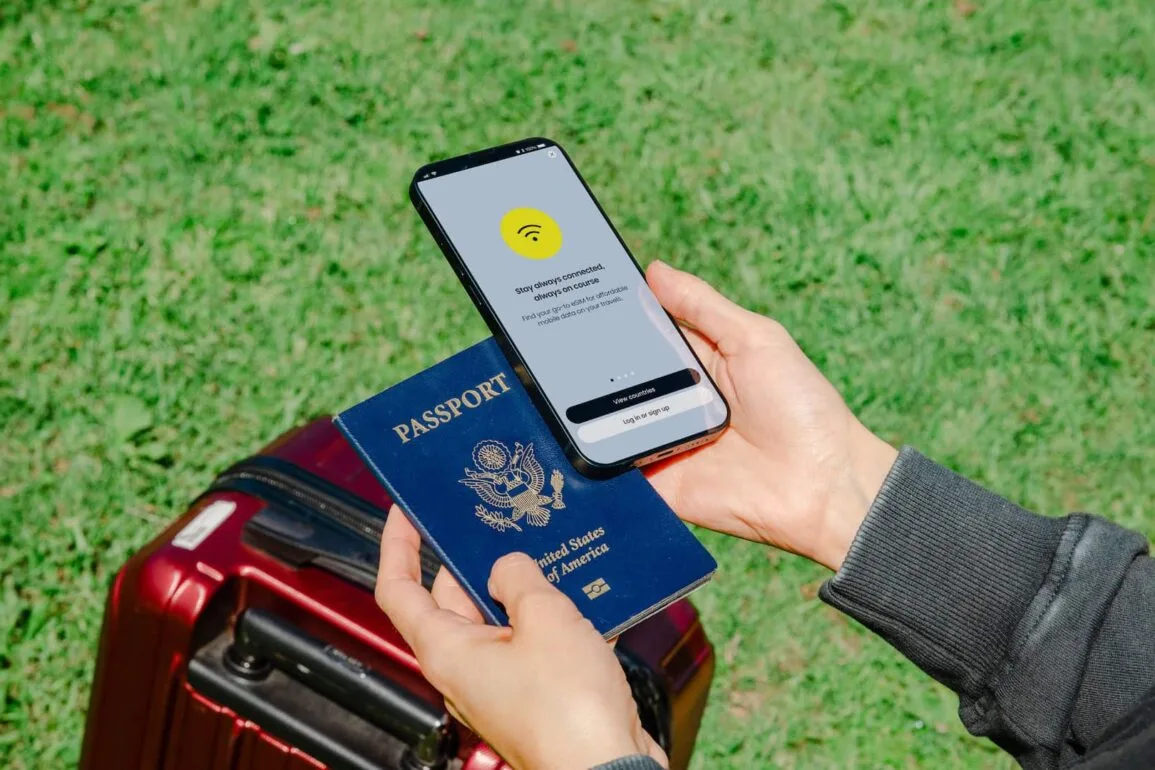Korea SIM Cards: Cheap and convenient options for travelers and expats
When you’re visiting South Korea, staying connected can make all the difference—whether it’s for navigating the city, communicating with friends and family, or simply finding that next great place to visit. While free Wi-Fi is widespread in big cities, hopping from café to café just to get directions, translations or check your messages isn’t always the most convenient (or enjoyable) way to stay connected. For first-time visitors or those staying a bit longer, having a dedicated SIM or eSIM card is essential for a hassle-free stay.
A Guide For Setting Up Your Sim Card In Korea
Unlock your phone before arriving to Korea
Please note that if you plan on bringing a device from home, you should unlock your device before you arrive in Korea, otherwise your device will only work with a SIM card from your original carrier. You can usually do this by calling your phone carrier at home before travelling.
Decide: A Prepaid SIM Card or Monthly Plan?
If you are staying in Korea for a short period of time (around 3 months or shorter), we recommend purchasing a prepaid SIM card as the process is a little simpler than getting a monthly phone plan. If you’re planning on staying for longer, however, a monthly plan will likely be the better option as you will save money in the long run.
Sort Out Your Documents
The next step is to figure out which documents you need to bring with you to set up your phone. Though the required documents can differ slightly from store to store, they remain largely the same throughout the country. Keep in mind, however, that you will need to bring different documents depending on whether you decide to get a prepaid SIM card or a monthly phone plan in Korea.
Documents For a Prepaid SIM Card:
- Passport
- Proof of entry (arrival slip)
- Cash or Card to pay for the SIM card
Documents For a Monthly Phone Plan:
- Passport
- Alien Card
- Proof of a Korean Bank Account
Affordable Sim Card In Korea for all stays
This guide walks you through the best Korea SIM Cards options for short, mid, and long-term stays, including an exclusive discount on Saily eSIMs for 10 Mag readers.
Jump to:
- Korea SIM Cards: Cheap and convenient options for travelers and expats
- A Guide For Setting Up Your Sim Card In Korea
- Affordable Sim Card In Korea for all stays
- Quick Comparison Table for SIM Cards in Korea
- Why get a SIM card in South Korea?
- Important Note on Airport Purchases
- 1. eSIM – The best SIM option for short-term travelers in Korea
- 2. Chingu Mobile – The Foreigner Friendly MVNO in Korea
- 3. Major Operators (SK Telecom, KT, LG U+) to set up a monthly plan
- 4. Convenience Store Prepaid SIMs
- Sort Out Your Documents
- Conclusion and Extra Tips
Quick Comparison Table for SIM Cards in Korea
| Options | Price Plans | Stay Type | Pros | Cons |
eSIM (e.g., Saily) | From $3.99/7days; $7.99/30 days | Short-term (up to 3 months) | Fast activation; No physical SIM; Covers 160+ countries; Same eSIM for all your trips; Cheap; Get your SAILY eSIM, 5% off with code 10mag5 | Usually data only |
| MVPN-Chingu Mobile | From KRW 25,000/month | Mid-term to long term (3+ months) | Cheap; Local number; Branches near universities and at the airport | Auto-payment unavailable; Limited app compatibility |
| Major Operators SIM plans (SK Telecom, KT, LG U+) | From KRW 50,000/month | Long term (6+ months) | Local number; Full service; Auto-payment available | Expensive monthly fees; Requires a Korean bank account and an ARC |
| Convenience store prepaid SIM | Varies (e.g, KRW 65,000 for LG U+) | Temporary stay, if phone not eSIM compatible | Quick and easy purchase | Limited data; Higher cost |
Why get a SIM card in South Korea?
While you can navigate most areas of South Korea with free Wi-Fi, it’s not available everywhere. If you’re here for a few weeks or more, or it’s your first visit, having constant mobile data might be invaluable for navigating, translating, or communicating locally. Let’s dive into your best options for staying connected.
And before you get started, ensure your phone is unlocked. This applies to both SIM and eSIM cards. An unlocked phone can use SIM cards from different providers, while a locked phone will not work with foreign SIM cards.
Important Note on Airport Purchases
No matter what option you choose, avoid buying any SIM card at the airport when you arrive. Prices at the airport are significantly inflated, and the selection might be limited. Instead, it’s advisable to arrange for a SIM or eSIM in advance and only pick it up if you have made prior arrangements. If you absolutely need to purchase a SIM card upon arrival, consider going to a convenience store instead, but only if an eSIM is not an option for you.
1. eSIM – The best SIM option for short-term travelers in Korea
What is an eSIM?
An eSIM (embedded SIM) is a virtual SIM card embedded in your device, allowing you to activate a data plan without the need for a physical SIM card. It’s an incredibly convenient option for travelers who want a fast, hassle-free setup and don’t want to deal with inserting or switching SIM cards. eSIMs are easy to install, affordable, and allow you to connect to local networks without needing to stand in line at the airport.

Who is an eSIM best for?
eSIMs are ideal for short-term travelers (less than 3 months), frequent flyers, and anyone who wants immediate data access upon arrival without the added stress of locating and installing a physical SIM. If you’re traveling across multiple countries, an eSIM can be installed once and updated with new plans as needed—no need for a new SIM card in each destination.
Our Recommendation: Saily eSIM by NordVPN
At 10 Mag, we’ve personally tried Saily, an eSIM powered by NordVPN, and we were impressed by how easy and reliable it was. Not only does it provide instant connectivity upon arrival, but Saily’s eSIM also prioritizes your privacy. Plus, for our readers, we’ve secured a 5% discount with the code 10mag5!
Exclusive Offer: Get 5% off your Saily eSIM with code 10mag5
Why choose an eSIM for your next trip to Korea?
Saily eSIM offers a range of advantages for travelers seeking convenience, affordability, and seamless connectivity:
- Download Once: Install your eSIM just once for all trips.
- Save Time: No need to wait in line at the airport; Saily is fully digital and ready to use upon arrival.
- Minimize Roaming Fees: Avoid high costs of international roaming by using local data plans.
- Compatible with iOS and Android: Saily eSIM plans work with most devices.
- Instant Connectivity: Your data plan activates automatically upon arrival, giving you instant access to local networks. You don’t need to manually activate your Saily eSIM.
- Flexibility Across Asia: Saily offers country-specific plans and regional options for those exploring multiple countries in Asia. So, if your plan is to travel all across Asia, an eSIM is the most convenient option, allowing you to stay connected with the same SIM throughout your trip. Saily’s Asia plans are affordable and provide excellent coverage, making it an ideal choice for travelers.
Disadvantages of an eSIM in Korea:
- No Local Number: eSIMs typically don’t provide a local phone number.
- Device Compatibility: While most newer devices support eSIMs, older models may not be compatible.
Pricing:
Saily’s plans start at less than $5, making them affordable for short-term visitors. Data options for Korea range from 1 GB to 20 GB, while Asia-wide plans offer between 1 GB to 100 GB. You can recharge easily from the app if you find yourself needing more data.
5% off your Saily eSIM
Code 10mag5
2. Chingu Mobile – The Foreigner Friendly MVNO in Korea
Chingu Mobile is a popular mobile virtual network operator (MVNO) in Korea, especially among foreign students and expats. They offer prepaid SIM plans at competitive prices, making it an affordable Korean SIM card option for mid-term to long-term stays.
What Makes Chingu Mobile So Affordable?
Chingu Mobile operates on a unique business model as an MVNO, which means they don’t own their cell towers but instead lease network space from major Korean carriers like SK Telecom, KT, and LG U+. This allows Chingu to offer competitive pricing without the overhead costs of maintaining a full network. As a result, users can enjoy substantial savings compared to traditional carriers.
Advantages:
- Affordable Plans: Chingu Mobile offers unlimited data at speeds of 3 Mbps (after an initial 300MB at high speed) starting at approximately KRW 25,000 for 30 days. This is a great deal compared to what major carriers charge.
- Local Number: You’ll receive a local phone number, which is essential for services like taxi apps and communication with locals.
- Convenient Locations: Chingu Mobile has branches near major universities and at the airport, making it easy to purchase or pick up your SIM card upon arrival. You can even order online in advance and collect it when you land.
Disadvantages:
- No Automated Payment: Unlike major operators, Chingu Mobile does not offer automated payment options, meaning you’ll need to visit the store to recharge your plan each month. This can be inconvenient if you’re planning to stay long-term.
- Limited Compatibility: Some local services may only recognize numbers from major Korean operators, limiting access to specific delivery apps and services. However, this may not be a dealbreaker for casual users.
3. Major Operators (SK Telecom, KT, LG U+) to set up a monthly plan
If you’re planning to stay long-term and work in Korea, you might consider plans from major operators like SK Telecom, KT, or LG U+. While they offer comprehensive services and reliable coverage, they tend to be more expensive than eSIMs or MVNOs like Chingu Mobile.
Advantages:
- Full Services: Major operators provide a local phone number and automated payment options.
- Broad Compatibility: You’ll have access to all delivery services and applications.
Disadvantages:
- Higher Costs: Monthly fees are significantly higher, ranging from KRW 50,000 to KRW 89,000.
- Requires a Korean Bank Account: To set up automated payments, you’ll need a local bank account.
If you’re serious about staying in Korea long-term, working there, as well as opening a Korean bank account, then opting for a major carrier can be a good option.
In order to set up a monthly phone plan, you will need to bring a valid passport, your ARC (Alien Registration Card), as well as proof of a Korean bank account.
The biggest hassle with setting up a long-term phone plan is the necessity of a Korean bank account. You can set up a Korean bank account easily if you have your ARC, though you can also create a bank account with your passport and proof of entry into the country.
4. Convenience Store Prepaid SIMs
While convenience store prepaid SIM cards may be available at the airport or local shops, they should only be considered if you cannot get an eSIM. Prices at convenience stores are generally more favorable than airport rates, but they still do not provide the best value compared to other options.
Advantages:
- Quick Purchase: If you find yourself in a bind without a pre-arranged SIM or eSIM, convenience stores can provide a quick solution.
- Availability: Prepaid SIMs are typically stocked at many convenience stores throughout Korea, making them easily accessible if you need one.
Disadvantages:
- Higher Prices: Regular operator prepaid SIM cards can cost around KRW 65,000 for a month, which is not a good value compared to eSIM options or MVNOs like Chingu Mobile.
- Limited Data: These plans often come with restrictions on data usage, making them less ideal for travelers who plan to use their phones frequently for navigation or social media.
Sort Out Your Documents
Once you decide whether you want a prepaid SIM card or a monthly phone plan, the next step is to figure out which documents you need to bring with you to set up your phone. Though the required documents can differ slightly from store to store, they remain largely the same throughout the country. Keep in mind, however, that you will need to bring different documents depending on whether you decide to get a prepaid SIM card or a monthly phone plan in Korea.
Documents For a Prepaid SIM Card:
- Passport
- Proof of entry (arrival slip)
- Cash or Card to pay for the SIM card
Documents For a Monthly Phone Plan:
- Passport
- Residence Card (ARC)
- Proof of a Korean Bank Account

Not sure how to get your Residence Card to get your Korea SIM Card monthly plan? Check our guide on How to Get Your ARC.
Conclusion and Extra Tips
Whether you choose an eSIM for its convenience and affordability or a local SIM card for a long stay, having mobile connectivity in South Korea is essential for an enjoyable experience. For short visits, we highly recommend the Saily eSIM, which offers a hassle-free setup with a discount for our readers. If you’re planning to stay longer, Chingu Mobile provides an excellent balance of cost and service, while major operators cater to those looking for comprehensive solutions.
Ready to stay connected during your trip? Get your Saily eSIM now with a 5% discount! Use code 10mag5 to save on your order.
In addition to the options mentioned, here are a few more tips to enhance your experience with SIM cards and phone plans in Korea:
- Registration Requirements: SIM cards in Korea must be registered under your name. For eSIMs, this is typically done digitally, while physical SIMs may require showing your passport.
- Internet Speed: Most plans offer decent speeds, but if you require faster connections, consider plans that specify higher Mbps limits.
- Customer Support: Major carriers generally provide better customer service in English, making it easier to resolve any issues you might encounter.
Stay connected and make the most of your time in South Korea!
Did you find this article helpful? Leave a comment below!
New to Korea? Check out our guides for more information on settling into life in Korea:
- How to Travel by Train in Korea
- Ultimate Korean Convenience Store Guide for essentials to buy upon arrival
- Your Guide to Renting a Place in Seoul
- Seoul Transportation Guide
Looking to expand your client base? Hosting an event that our readership would be interested in? Advertise with 10 Magazine.











